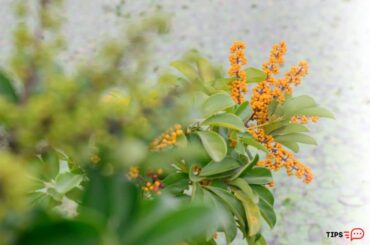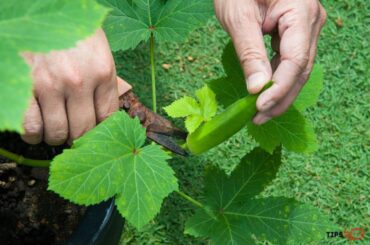What to feed ferns in pots? Potted ferns need feeding on a monthly basis. Ideally you need to feed the potted plants with an appropriate fertilizer type as only then they can grow to their best potential.

Ferns are such great beautiful plants which have been in existence for a million of years. They are also known as versatile plants which can thrive in numerous conditions. It is important that you feed all the potted ferns just like you feed the other regular indoor grown plants.
However perennial ferns would perform well whether you feed them or not since they can gain nourishment from the decaying leaves as well as from the organic matter from the soil. That said, you may also use a slow-release fertilizer as well.
Ferns can survive in a variety of different conditions. Thus, they are considered as great indoor plants. Feeding the ferns is very straightforward and you do not need to do anything complex here.
That said, you need to be mindful of the best fertilizer which would suit this purpose, the best time to feed the plants etc. So, if you think you want to enhance your knowledge in this aspect, this article will give you an insight to this subject.
What to feed ferns in pots?
I recommend you use a water soluble 20-10-20 or 15-15-15 fertilizer to feed the ferns in pots. Ferns don’t have a major requirement when it comes to fertilizing. So ideally you need to use a balanced fertilizer which includes micronutrients in pots.
Refrain from using fertilizers which contain high components of nitrogen as excess nitrogen levels would burn the roots as well as the leaves of the ferns particularly if the plants are dry. Bear in mind that tropical ferns are somewhat more sensitive to excess fertilizers. As such, dont over feed the plants any time.
What nutrients do ferns need?
It is crucial that ferns get Nitrogen to maintain their green color. In addition to that, ferns need nutrients such as calcium, potassium too. However, they can gain those nutrients by compost mulch, peat and rest of other organic materials.
A fertilizer which has about 100 parts per million of nitrogen in a balanced fertilizer comprises ammonia and nitrate and they would play a major role in maintaining the green color of the plants.
In addition to aforesaid nutrients, ferns need Magnesium and sulfur also to grow vigorously. If the ferns grow whilst running short of Magnesium, you could witness a slow growth in the plants. In addition to that they would become pale or yellow colored too.
Once they run short of essential nutrients, they won’t be able to conduct the photosynthesis process properly. You could commonly spot the potted ferns lacking the Magnesium.
Apart from that, potted plants require sulfur also to thrive well. If the ferns don’t get sufficient levels of sulfur, they would also turn their leaves color into yellow. Furthermore, they would tend to slow their growth as well.

How do you fertilize a potted fern?
Before explaining how to fertilize the potted ferns, it is important that you select the right soil mix to grow the potted ferns. Ideally a slightly acidic to neutral soil mix which has excellent drainage would suit these plants the best.
Potted ferns would ideally wish to have a soil mix which has a ph. level of 4 to 7. Most of the garden soil mix has a pH level of 6 to 7 and if you wish to ascertain the pH Level of the soil mix you can get your soil mix tested by a pH testing probe at your local garden center.
You can be tactful in using compost mulch or add a compost layer into the soil when feeding the ferns. If you wish to add fertilizer, you can use it sparingly. Furthermore, you need to dilute it and then use it on the plants.
Best would be to use a slow-release fertilizer on these plants. if you have mistakenly applied excess fertilizers, you can flush them off by using a splash of water.
What does Epsom salt do for ferns?
Epsom salt would increase the sulfur and Magnesium levels of the ferns. These are some crucial nutrients that will help the ferns to have a vigorous growth in the ferns just like the other regular main nutrients. These two nutrients are vital in chlorophyll production.
In addition to that it would help the ferns to grow healthily and make them more resistant towards diseases and for pests as well. So, if you wish to make your ferns look lush in looks you can consider applying Epsom salt on the ferns.
To apply Epsom salt, you can simply add 2 tablespoons of Epsom salt into one gallon of water. Next spay it once a month on the plants when they are at their active growing phase. When the growth slows, you can reduce the amount of Epsom salt you put in.
So literally you can use only one tablespoon of Epsom salt per one gallon of water. Once you feed the plants with Epsom salt precisely it would make the plants look lush and healthy. If you have grown the ferns in cold weather conditions, do not apply the Epsom salt during winter.
Furthermore, you may also add a pinch of Epsom salt in a balanced fertilizer when feeding the plants. Additionally, you can also add one tablespoon of Epsom salt around the base of your ferns once a month and it would also give you the desired results.
Do ferns like Miracle Grow?
Yes Ferns like Miracle Grow fertilizers. You could feed the ferns with Miracle grow fertilizers when they are developing their new growth during spring. Applying the Miracle grow fertilizers is very simple and once you provide them it would make the plants look more vibrant.
Miracle Grow is a quite famous fertilizer type and many people prefer to use this fertilizer a lot. It would work very well on your ferns just like it would do for other indoor plants. Miracle Grow is a highest rated fertilizer type.
It is very straightforward to apply the Miracle grow fertilizers. Further it would promote the healthy growth of the plants as well. One might find it difficult to choose a right fertilizer for the ferns as there could be certain fern species which would be somewhat prone towards feed burns.
For example, the Boston ferns is a commonly grown fern species, and they are somewhat vulnerable for feed burns in the plants. That said, if you feed them precisely it would help the plants to grow firmly.
So, a fertilizer which has a 1-1-1 ratio would be ideal for these plants. That way you can avoid having any occurrence of burnt leaves.
When you apply them, it might sometimes ask you to feed them on a weekly basis even though I don’t recommend doing so. Ideally you can feed the plants on a monthly basis instead of feeding them on a weekly basis. Best seasons to apply these fertilizers would be spring and summer.
During winter and fall, you can feed them only once every two years. Moreover, when you apply it, you should avoid applying them directly on the plants as it would be somewhat dangerous for the plants.
What I would recommend you to do is to dilute the Miracle grow fertilizer with water and then apply on the ferns. Further when you apply this to the soil, you need to make the soil moist and water them thoroughly. Keep monitoring the plants whether you can spot any signs of feed burns.

What is a good plant food for ferns?
A slow-release fertilizer would be the best plant food for the ferns. That said, ferns can absorb the necessary nutrients levels from their soil mix also. However, if you wish to feed the plants ideally it has to be a slow release fertilizer.
So, a water soluble 20-10-20 or 15-15-15 fertilizer would be ideal on these plants. They would provide the adequate nourishments for the ferns. Don’t use fertilizer which contains high nitrogen levels as it would burn the ferns.
When should you feed ferns?
You can feed the plants once a month only when they are actively growing. However, if you have repotted the fern recently, you need to first give it some time so that it can adjust to grow in new conditions. Generally speaking, you need to wait for about six months to feed the ferns since repotting the plants.
That said, you can feed them before that if the requirement arises. Thereafter you can feed them once a month when they are actively growing. You can limit feeding them once every other month during fall and winter.
Ferns don’t have a major requirement when it comes to fertilizing particularly if you have provided a compost layer in their soil. Don’t feed the plants when they are dormant as it would worsen the conditions and make the plants health deteriorated.
Always bear in mind that ferns can gain nourishment from their soil and feeding them in excess would only be harmful rather than helpful. However indoor grown ferns have a higher demand when it comes to fertilizing when you compare them with the outdoor grown ferns.

How do you revive a dying fern?
The key factor in revising a dying fern is transplanting the dying fern into a spot where you can provide optimal growing conditions for them. This literally means you need to shift them to a spot where they can gain sufficient sunlight, moist soil and amended soil mix which has a great component of compost.
Besides, you need to plant them in a location where they will be protected from wind too. Last but not least, you need to water these plants when it is necessary and ensure that you keep their soil moist.
Repotting
If I further describe these, you should first consider transplanting the ferns to a spot where they will be getting amended soil. When I say amended soil it should comprise of leaf mol, compost or even manure for about 12 inches deep and as inches across in the soil.
That way the root system can gain sufficient nutrient levels. These are the conditions they literally get in their natural habitats and when you replicate the same when you cultivate them, it would be easier for the dying ferns to revive.
They would literally retain a lot of moisture and ensure the excess water is draining away. That way the ferns would get a moist soil mix and not soggy soil mix.
Protect from wind
Next you can consider planting the fern in an area where they will be protected from the wind. Ferns can grow in shady spots in your garden. As such the water evaporation in their soil takes place at a slow pace.
If you have grown the ferns where there will be other surrounding plants, they would also provide a wind break for the ferns.
Apply water
Thirdly you need to apply water for these plants’ soil so that you can keep their soil evenly moist. When they are well established, you don’t need to water them a lot. That said, if the ferns are dying or have turned brown, you need to keep the soil moist so that it would allow the plants to revive.
Add mulch
Furthermore, I suggest you add a 2-inch layer of mulch around the fern during spring. Mulch is such a layer of compost, leaf mold and well-rotted manure and when you apply those it would improve the soil structure of the plants. They would further retain more water and keep nourishing the plants as well.
I urge you to add a mulch layer during the beginning of spring as it would keep the soil moisture at an optimal level specially during spring and summer.
Pruning
Lastly if you come across any dying brown foliage, you need to cut them back so that it would keep the garden look neat and tidy. If you spot the ferns’ leaves edges becoming brown in color, you can snip them off using a pair of pruners.
Furthermore, I suggest you add a mulch layer so that it would insulate the rhizomes from frost and from cold as well. That would give a fresh start for them and would be easier for them to come up with new lush growth during spring.
Conclusion
To conclude the article on “What to feed ferns in pots?”, fertilizing the ferns is a very straightforward task. What you need to be mindful of is that you are choosing the right fertilizer and that you are adding it at the right time.
I hope this article gave you comprehensive knowledge on how to feed the ferns and that you are all set to start cultivating these precious plants.
Read Next : 06 Best Homemade Fertilizer For Ferns




